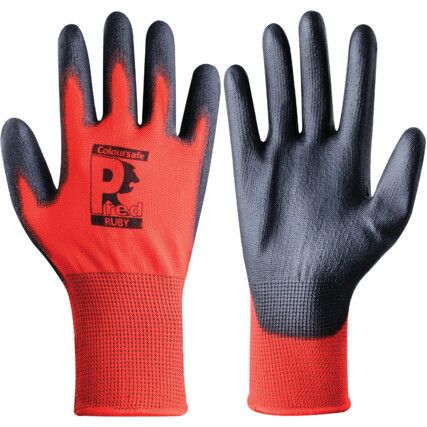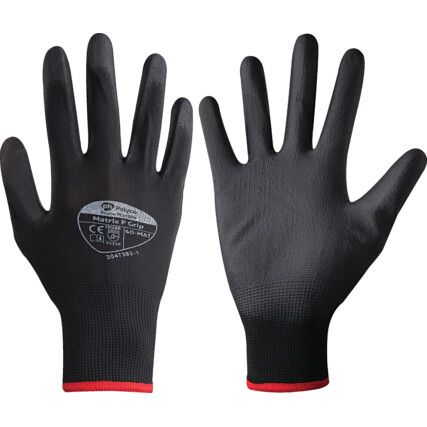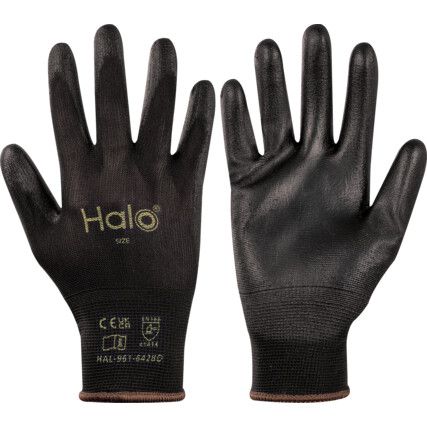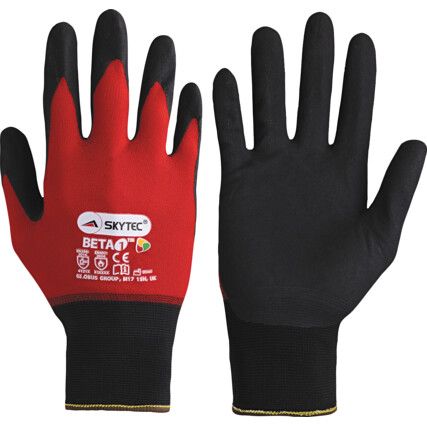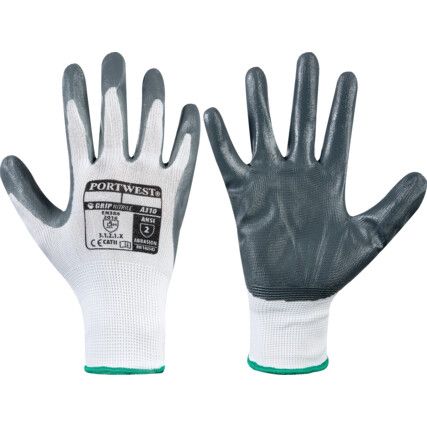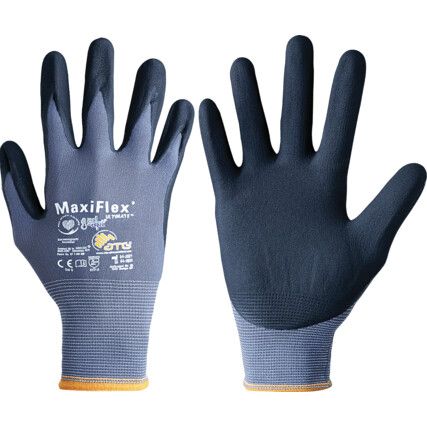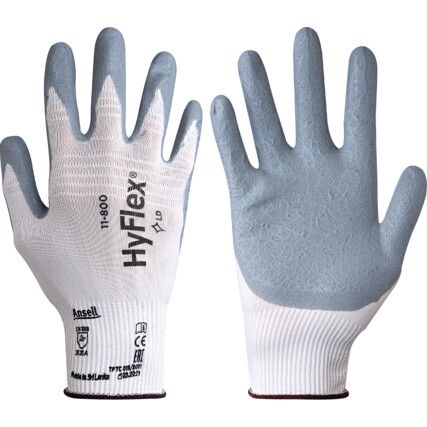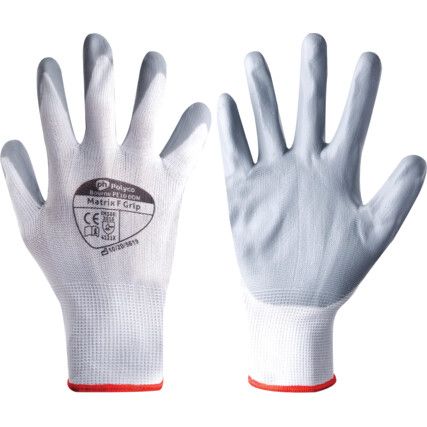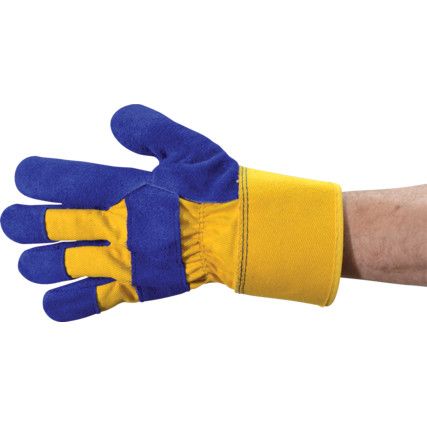Mechanical Hazard Gloves
Designed to keep your hands safe from abrasion, cuts, tear, puncture and potential impact hazards, mechanical hazard gloves are imperitive for keeping you and your people safe. Here at Cromwell, we supply a wide range of mechanical hazard gloves from national brands Ansell, Ejendals and Polyco as well as our quality exclusive brand Halo®. For more information and guidance, visit our comprehensive guide or download our Safety Glove Guide here.
What are mechanical hazard gloves?
Mechanical hazard gloves are defined by their compliance to the standard EN 388:2016 - Protective Gloves Against Mechanical Risks. EN 388 was first published in 1994 and subsequently revised in 2003, and again in 2016.
It includes the testing assessment of the resistance of the palm area to mild abrasion, cut, tearing and puncture, and when required, impact protection. If tests are not performed or are not applicable, 'X' will be placed instead of a number/letter.
What is the abrasion resistance test as part of the EN 388 standard?
When compared with EN 388:2003, there is a technical change to the abrasion resistance method for EN388:2016, relating to the choice of abrasive paper but the scores that can be achieved remain unchanged. The scores are from 1 - 4, with 4 being the highest score being able to be achieved.
Abrasion resistance is tested by the number of cycles that the paper does before inflicting damage upon the gloves. Level 1 is 100 cycles, level 2 is 500 cycles, level 3 is 1000 cycles and level 4 is 8000 cycles.
What are the two cut resistance tests as part of the EN388 standard?
With regards to cut, there is the original coupe test, and in 2016 there was the introduction of the Tomodynamometer (TDM-100 or TDM) cut test under EN ISO 3997.
The initial thought was that the TDM test would supersede the original coupe test, but this is now not the case, and both will remain as applicable tests.
However, it is important to note that the tests are completely different, and the result cores do not correlate with each other.
The Coupe (Circular Blade) test is a circular rotating blade and results are based the number of cycles the machine completes before cutting through the fabric. It was initially thought that the coupe test would be made redundant under EN388:2016 and the TDM test take precedence. However both tests will remain but there have been changes to the coupe test from the 2003 version to the now 2016 version.
The test has been updated from a technical standpoint for it to remain as one of the cut test options. The score given, after achieving a certain test result using this method, remains from 1 - 5, with 5 being the highest rating to be achieved.
The Tomodynamometer (TDM) test, also referred to as the TDM-100 test is a straight blade, and the test is based on the vertical
force applied in newtons until cut through takes place. The force and cut-through length are plotted on a graph and a trend line is generated. The identified force is applied to the specimen a further five times.
If the results of the stroke length are within the tolerance levels, the test is then complete, and the force has been determined
and given a score from A - F, F being the highest score. It is important to note that each blade is only used once for the test, and that as it is a straight blade.
It is widely thought of to be a test with more similarities to real world applications and more comparable to potential cut hazards
and risks in the workplace.
Usually there is an "X" which denotes that a test has not been undertaken or alternatively, in the case of the TDM cut test, there may no marking shown on the glove or documents at all.
What is the tear resistance test as per the EN388 standard?
In this test, specimens of material from the palm of four gloves and clamped in the jaws of a standard tensile strength testing machine.
The jaws are moved apart at a constant speed (100mm/min), and the force (in newtons) needed to tear the material is measured. The scores are from 1 - 4, with 4 being the highest score being able to be achieved.
What is the puncture resistance test as outlined in the EN388 standard?
The test uses a rounded object which is pushed 50mm into the specimen at a constant speed of 100mm/min using a compression test machine. The maximum resistance force (in newtons) is recorded.
Performance levels are based on the lowest of four test results. The scores are from 1 - 4, with 4 being the highest score being able to be achieved.
It is important to note that this test would not replicate the puncture resistance needed to protect against potential needlestick risks.
There is currently no standard for the testing of hypodermic needles with hand protection. We (the UK) currently align ourselves with the American ANSI standard, ASTM F2878, as there haven't been a UK equivalent.
However, this is under review as we anticipate a needlestick test will make it into future revisions of EN 388. As your safety provider as soon as we are informed of such additions we will update this guide to reflect.
What is the impact resistance test under the EN388:2016 standard?
This is a test that was not included in EN 388:2003, and is used for gloves which incorporate specific impact-resistant properties which may be added to the palm, back of the hand or the knuckles.
The test area is impacted with a 2.5kg flat face striker from a sufficient height to provide impact energy of 5J. The peak force which is detected by a sensor is recorded.
Four tests are carried out on specimens of each area of protection taken from four different gloves. The test result is either a Pass "P" or Fail "X", or alternatively, there may no marking shown on the glove or documents at all.
Where would I use mechanical hazard gloves?
As the name suggests, mechanical hazard gloves are designed primarily for use within the automotive trade, due to their adaptability and suitability to hazards that are commonly found within this industry.
However, they can also be utilised in other industries such as construction, manufacturing or engineering, depending on the types of hazards that workers within those environments are faced with.
If in doubt, it's always best to perform a risk assessment to determine what level of protection you need against the particular hazards posed by your workplace environment and whether mechanical hazard gloves are the best selection for your hand protection.
Considerations when choosing mechanical hazard gloves
Besides considering what level of protection you need and which EN388 result you need for your mechanical hazard gloves, there are several oher factors to take into account before purchasing your gloves.
• Material and Durability - Once you know what level of protection is required of your mechanical hazard gloves, you can weigh up which material is the most suited for you application. Select robust and durable materials like nitrile, polyurethane (PU), leather, PVC or latex depending on your needs and preferences.
• Fit, Size & Comfort - To ensure proper protection when working, mechanical hazard gloves (and PPE as a whole) should fit properly, should not be restrictive and should be able to be worn for long hours of the day. When it comes to mechanical hazard gloves, ensuring that you have the right size glove that offers a good level of dexterity and movement, comfort and a secure fit balanced with the right level of protection is crucial. Check for features such as elasticated cuffs, comfortable nylon liners with moisture wicking or heat reduction control or brand specific technologies that are designed to ensure comfort even when utilising mechanical hazard gloves for extended amounts of time.
• Grip & Dexterity - Depending on your intended application, it may be vital that your mechanical hazard gloves are able to grip components whether they are wet or dry, oily or greasy. Look out for palm and fingertip coatings on mechanical hazard gloves such as polyurethane (PU) or sandy nitrile which can bolster grip.
